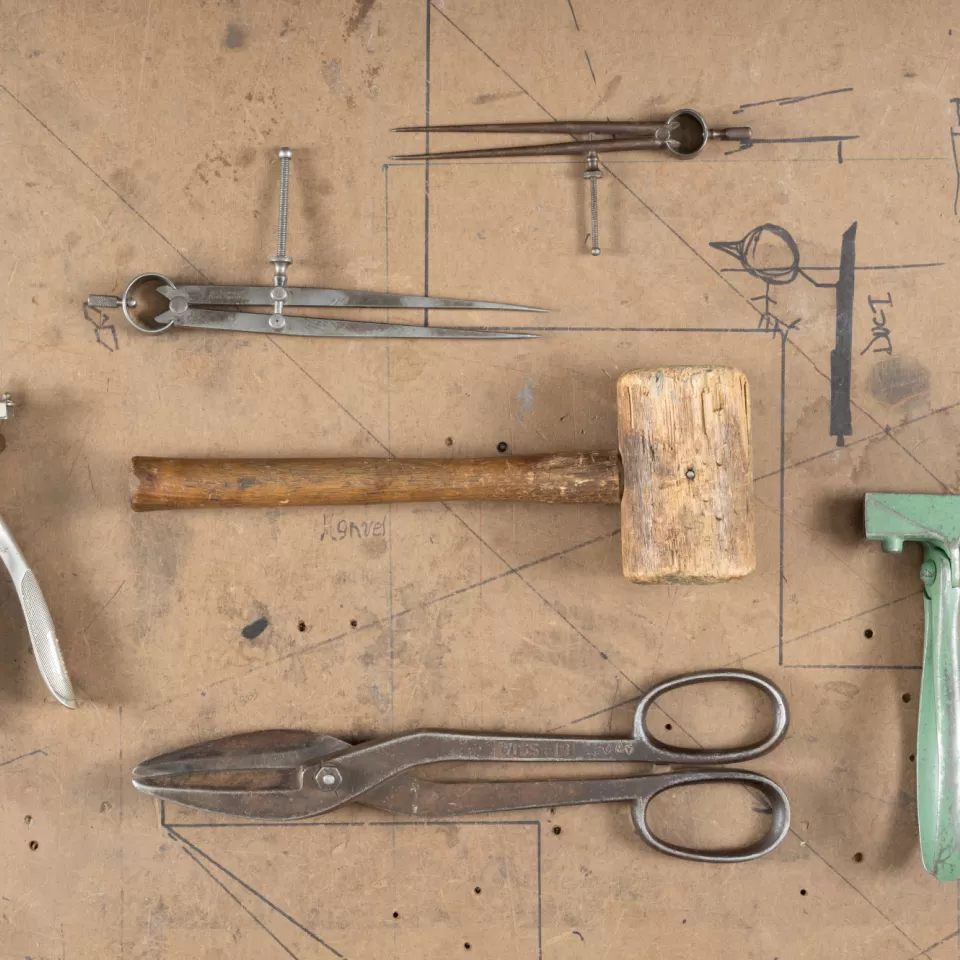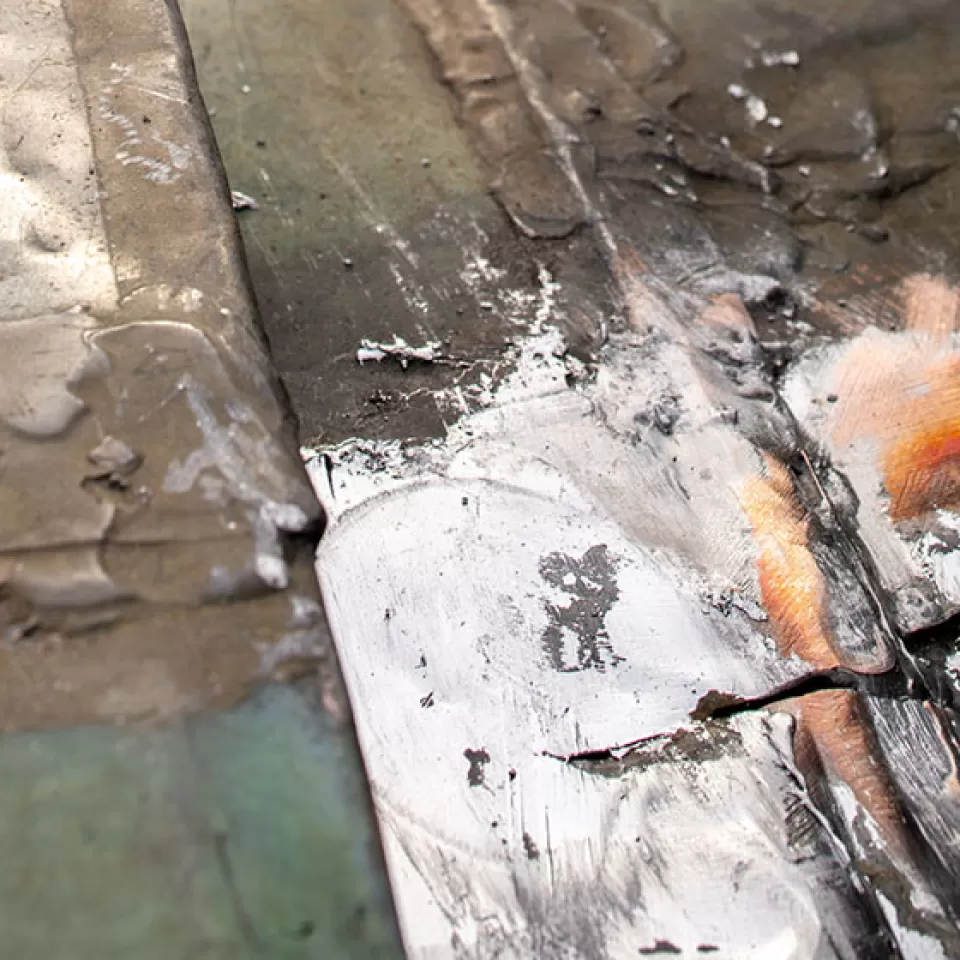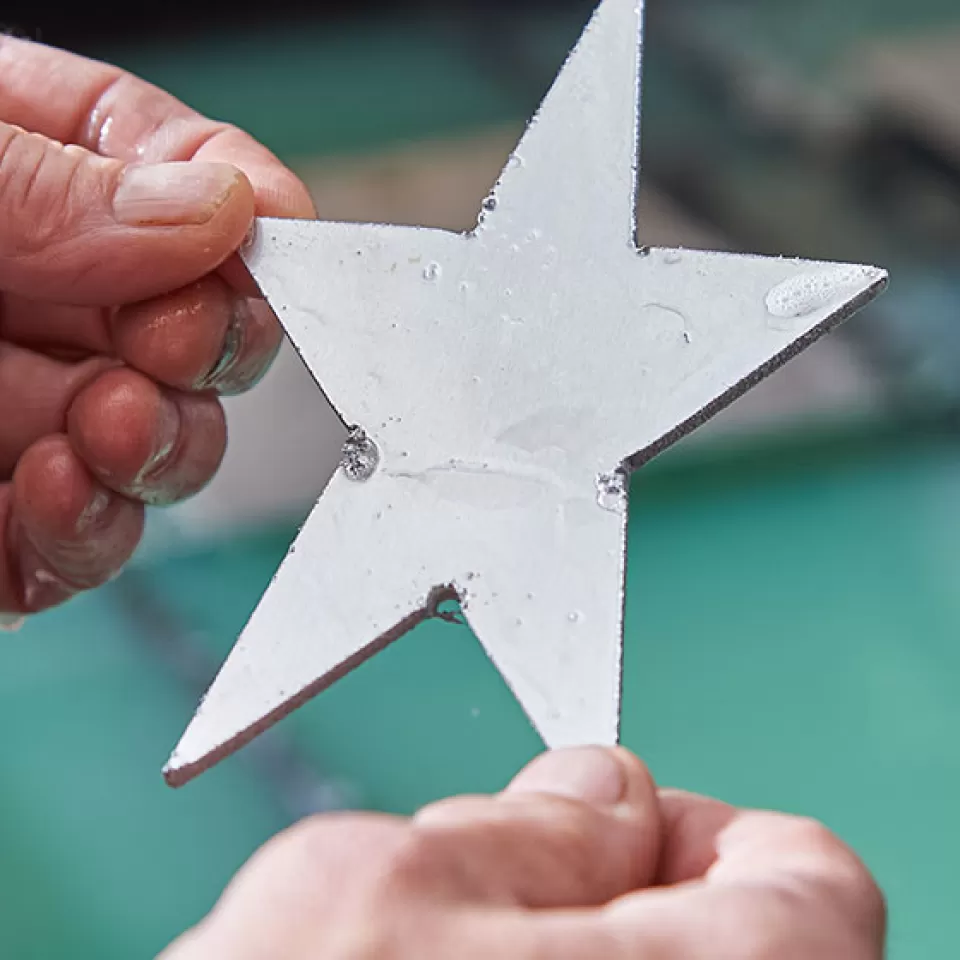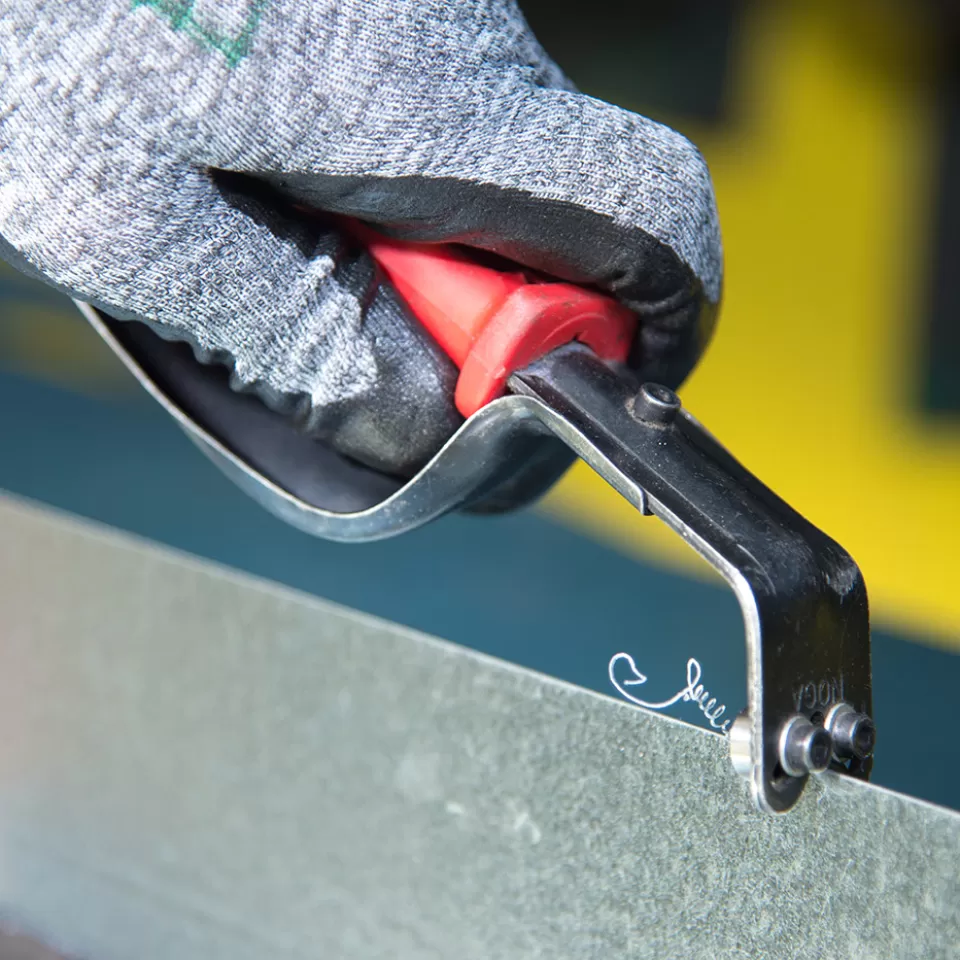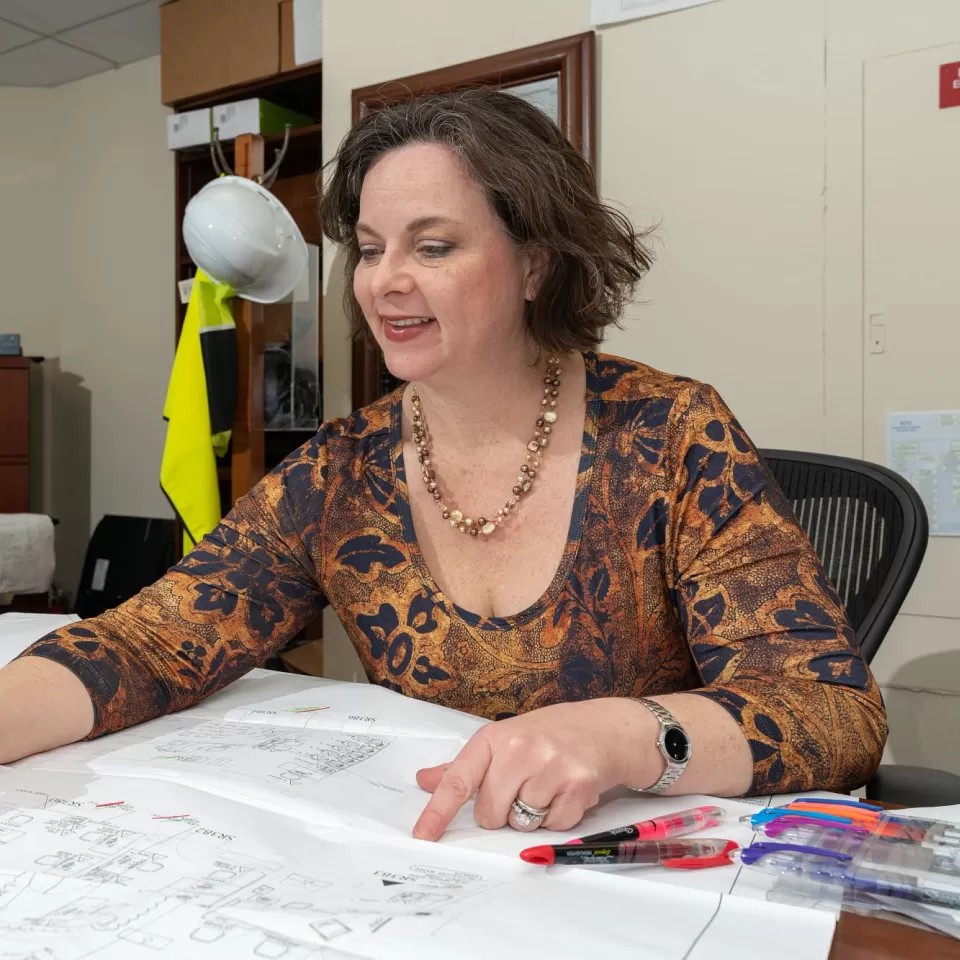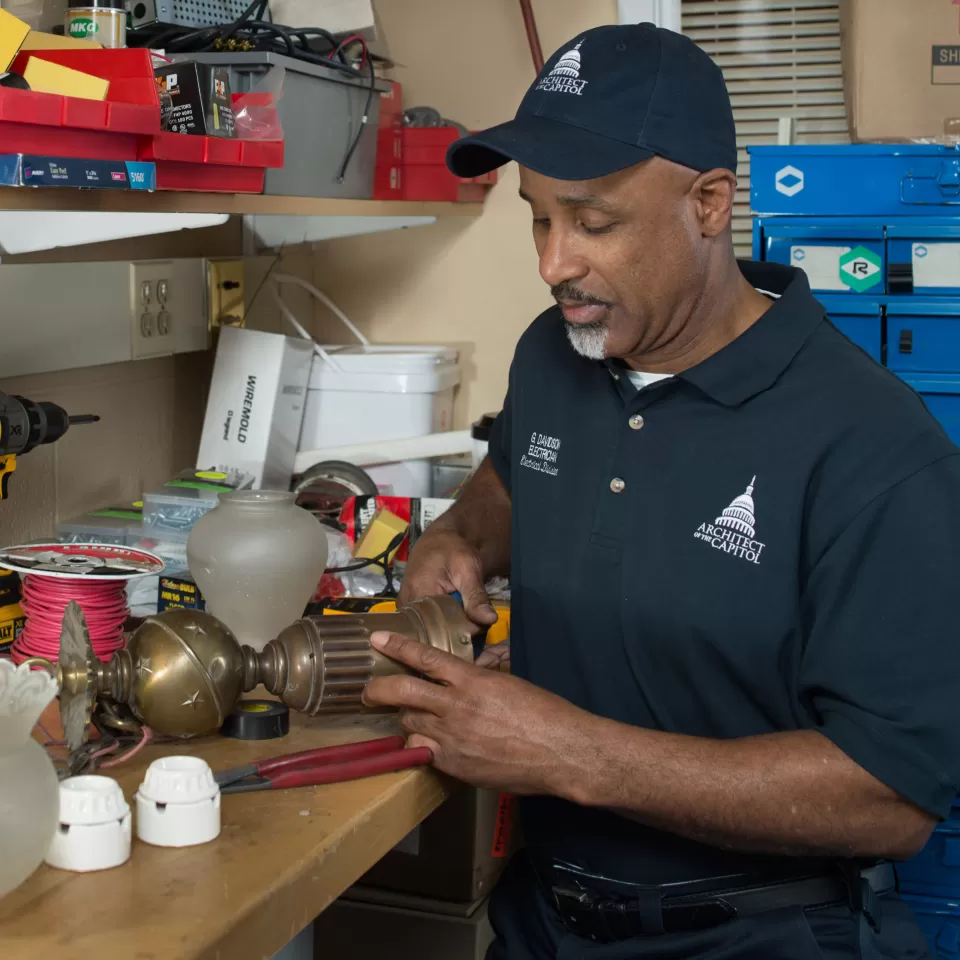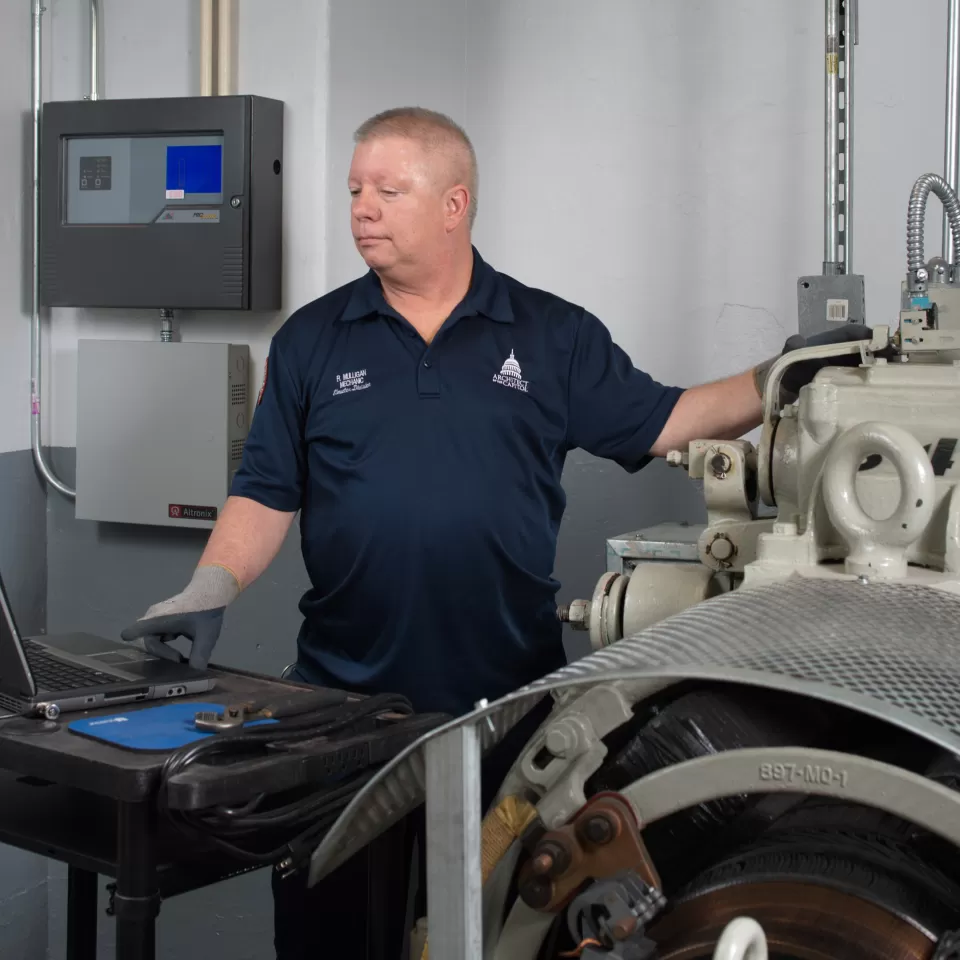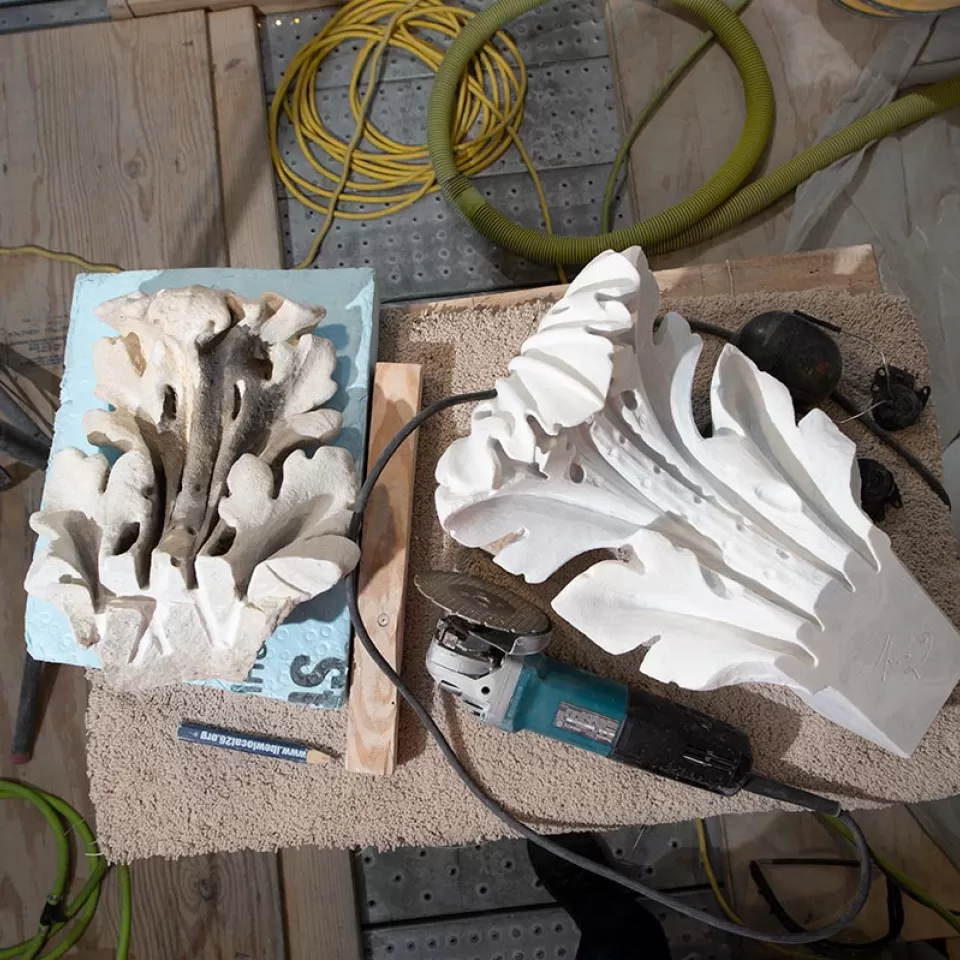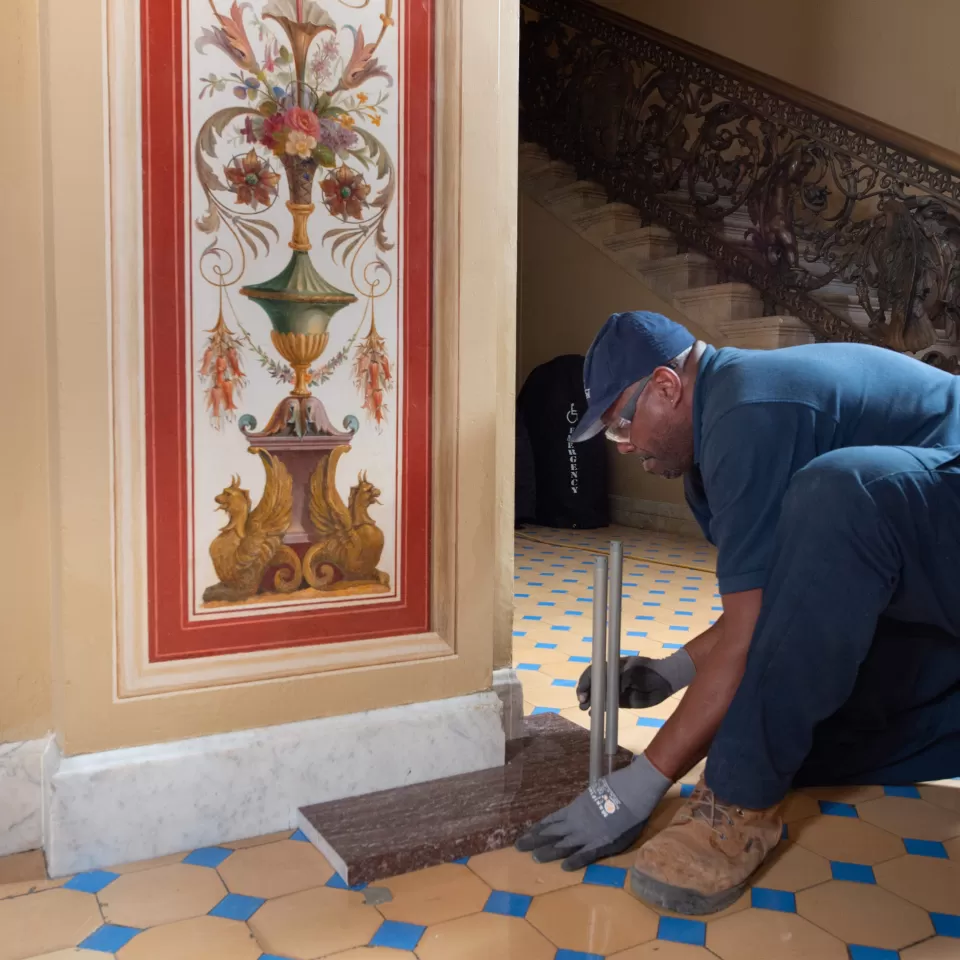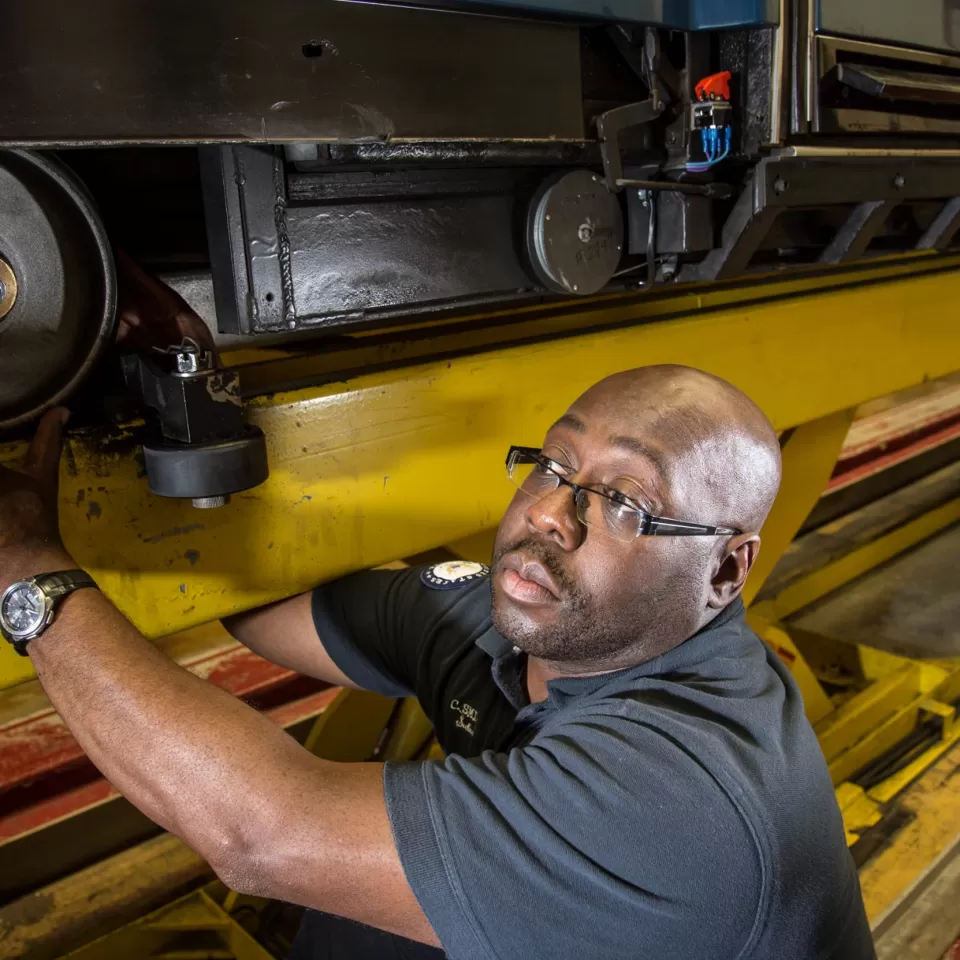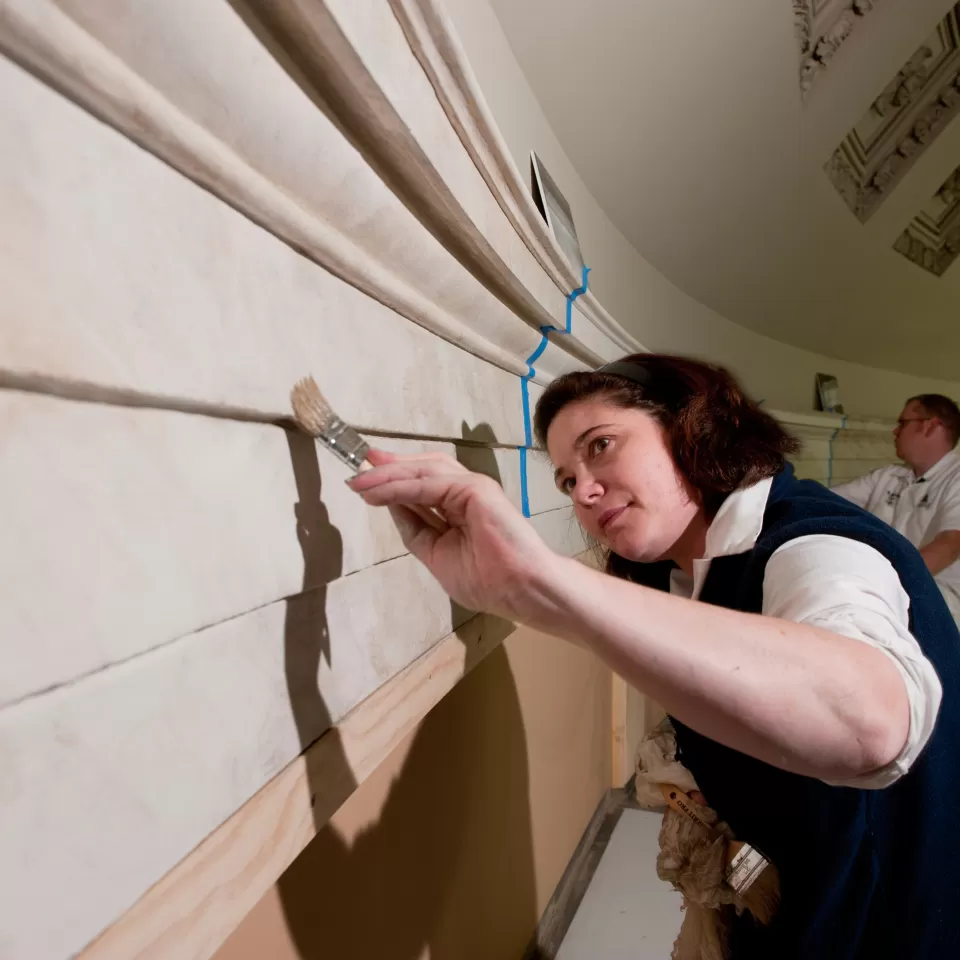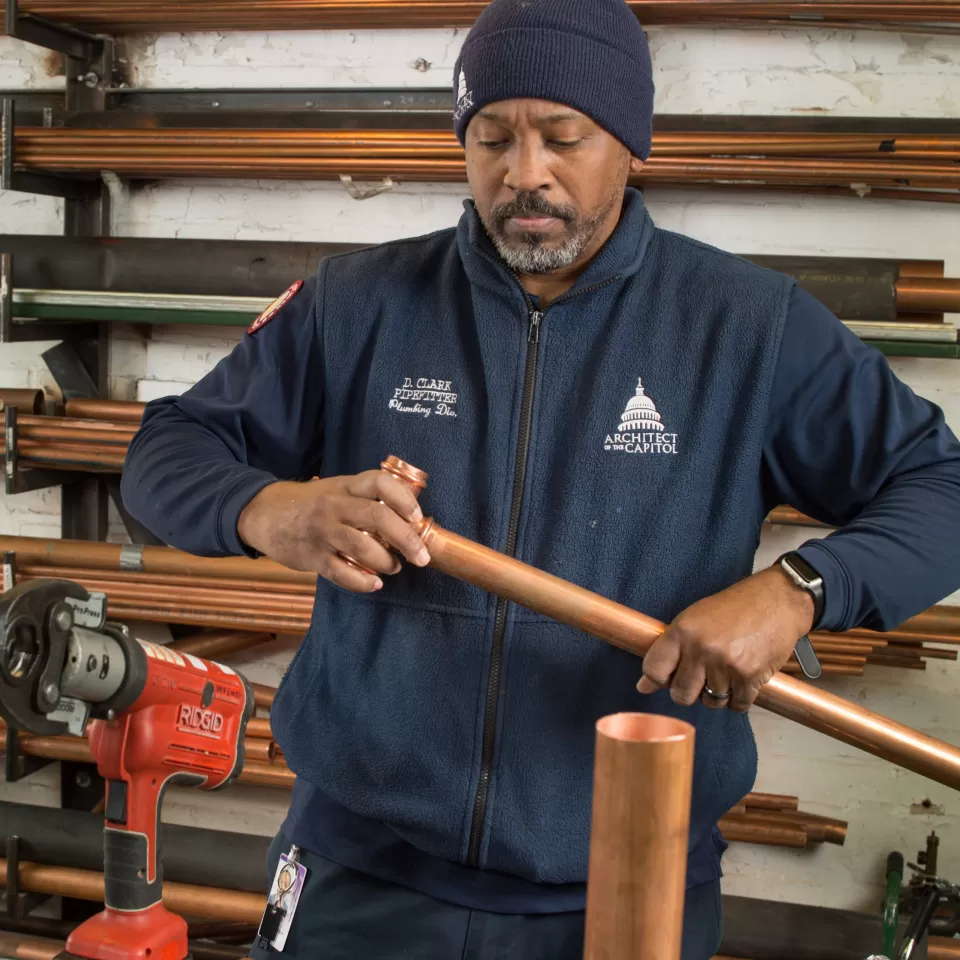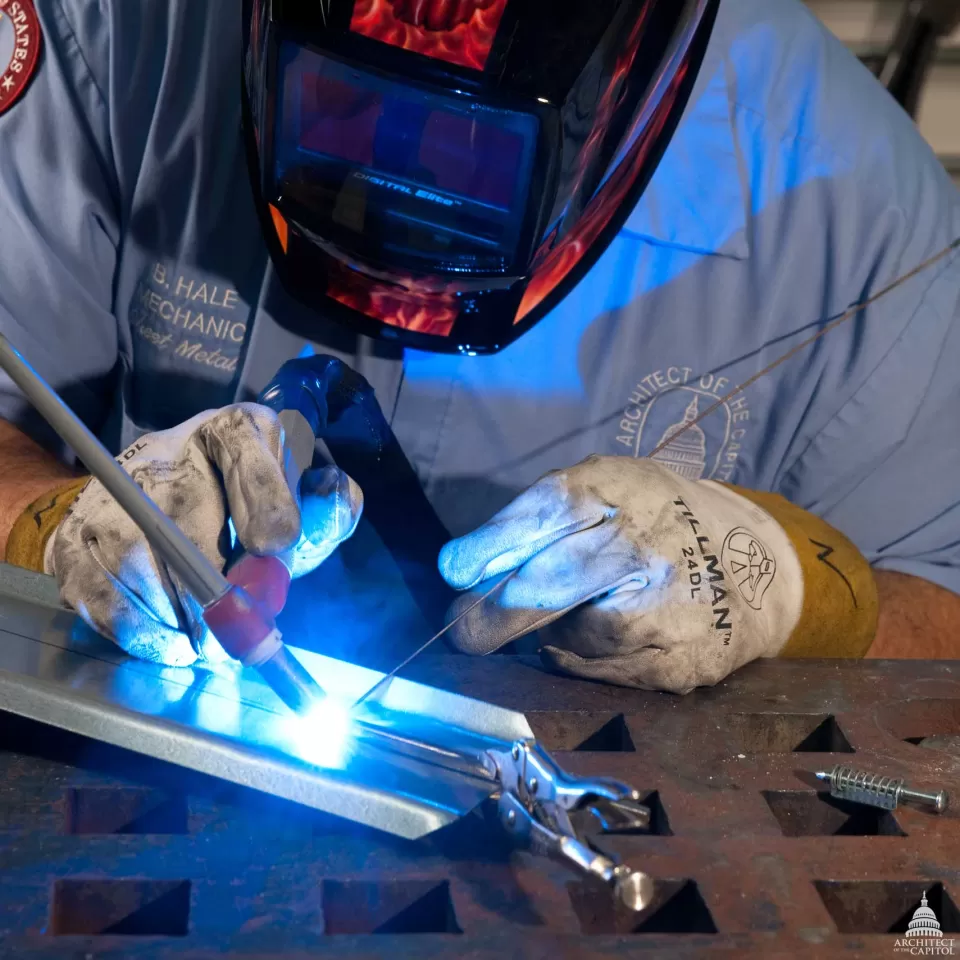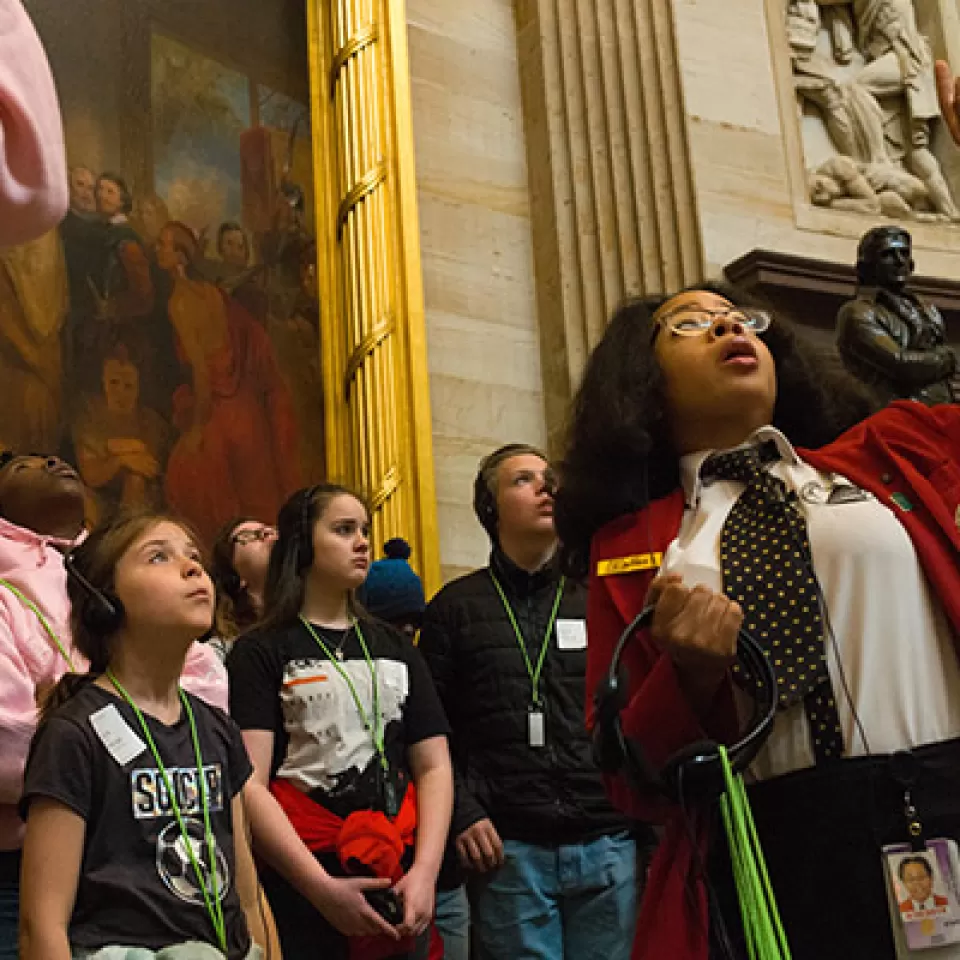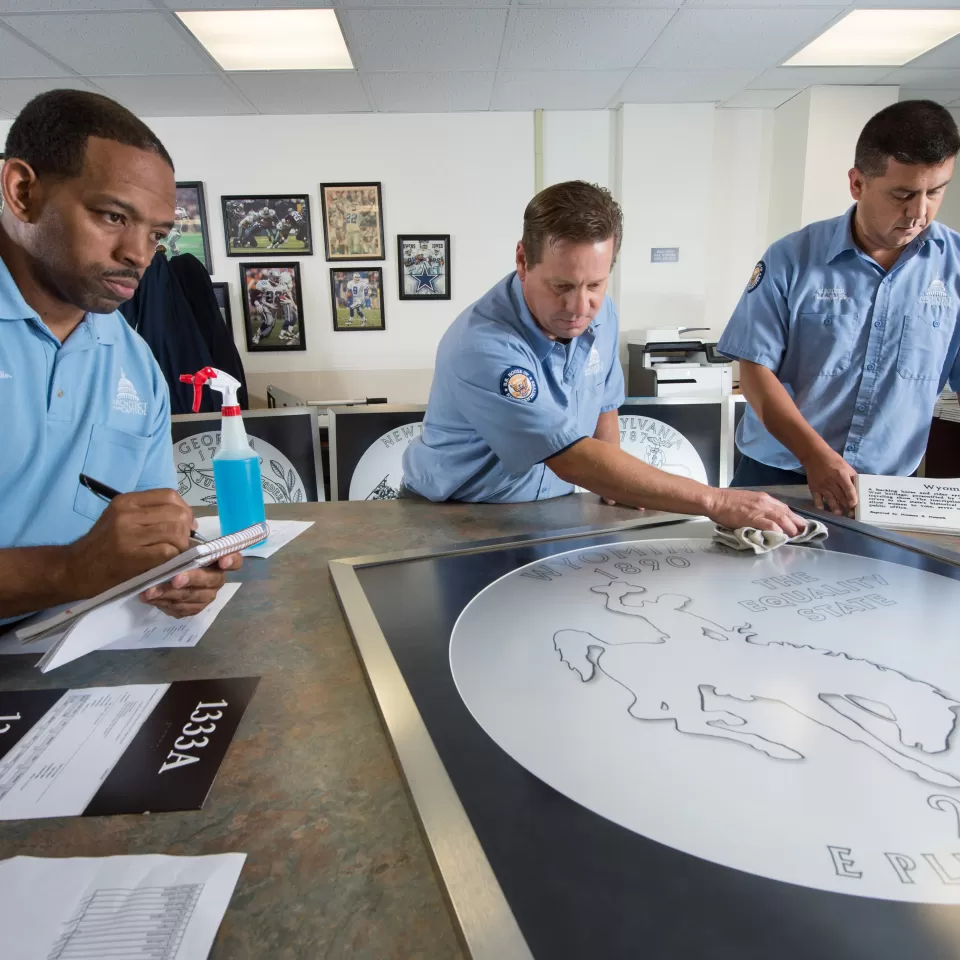Discover More
Metal is a foundational part of the buildings under the Architect of the Capitol's (AOC) care, metal conduits carry electrical wires through the buildings, metal ducts carry air that cools and heats the buildings, in fact metal is used in nearly every job in some form.
The AOC sheet metal teams fabricate, persevere and restore anything metal across Capitol Hill. This includes the roof of the United States Capitol and its iconic "Walter dome" recognized around the world as a symbol of American strength and freedom. During its construction from 1855 to 1866, perhaps the greatest threat to the dome was the outbreak of the Civil War. Since that time nearly 150 years ago, while the Union was restored, multiple forces have been unrelenting in their attack on the Capitol Building—time, weather and nature.
